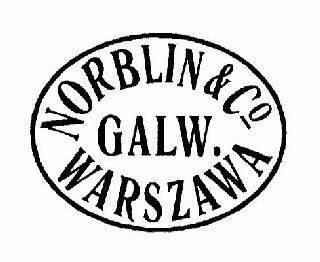


NORBLIN is a Polish brand with a history dating back to 1809, when the bronze caster Wincenty Norblin established a bronze workshop in Warsaw's Old Town. Initially, the company specialized in producing carriage fittings, military armor decorations, and church and interior ornaments, including clocks, candlesticks, candelabras, statues, and inkwells. After Wincenty Norblin's death in the mid-19th century, the business was taken over by his son Ludwik, who, in 1865, partnered with the goldsmith Teodor Werner, resulting in the formation of a company.
In 1893, the workshop moved to Żelazna Street in Warsaw, purchasing the Braci Buch factory. It then changed its name to Towarzystwo Akcyjne Fabryk Metalowych pod Firmą Norblin, B-cia Buch i T. Werner, expanding its production to include silver-plated goods and metal products such as pipes, sheets, wires, and components for ammunition production.
During World War I, the factory was evacuated to Russia, and after the war, it resumed production and quickly regained its market position. In 1921, NORBLIN acquired a factory in Głowno, where ammunition was produced. By the 1920s, the company employed around 1,800 workers, and its product range included a wide variety of metal products, including materials for the production of weapons and machinery.
During World War II, the factory was almost completely destroyed by the Germans, who transported most of the machinery to the Reich. After the war, the factory was nationalized and renamed Walcownia Metali Warszawa. Production continued there until 1982, when the factory moved to Bielany. After 1989, following political changes, the company returned to its historical name – NORBLIN S.A., continuing its operations until 2001 when it ceased metalworking production.
In addition to industrial production, NORBLIN factories also created valuable artistic works, including the famous bronze statue of Nicolaus Copernicus, located in front of the Polish Academy of Sciences. In 2004, the company changed its business profile, focusing on investments and capital operations.